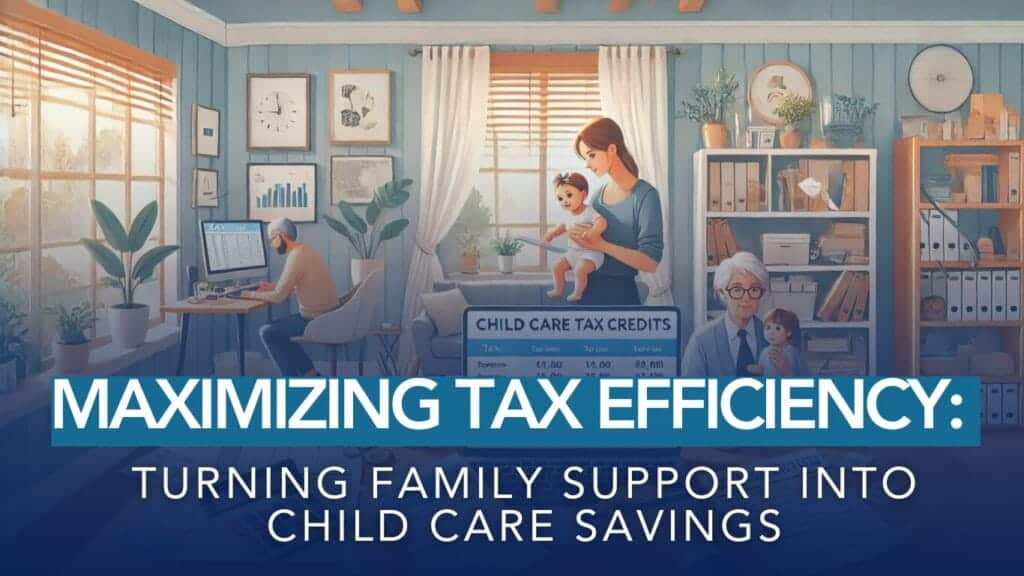
As a business owner, you’re always looking for innovative ways to save money on taxes while maintaining support for your family. If you’re providing financial assistance to your parents or in-laws and need someone to watch your children while you work, you can turn this situation into a tax-saving opportunity. Here’s how to optimize your family dynamics for tax efficiency by utilizing the dependent care credit.
Strategy: Convert Support Payments to Child Care Payments
If you’re currently offering financial support to your parents or in-laws and they can help with babysitting, you can classify these payments as compensation for child care services. This approach allows you to potentially claim the dependent care credit for these payments.
The dependent care credit is available if your relative looks after your children so that you and your spouse can remain gainfully employed. For families with middle to upper incomes, the credit is typically 20% of the first $3,000 of qualified expenses for one child under 13 and 20% of the first $6,000 for two or more qualified children. Thus, if you have three children under 13 and pay someone to watch them, the maximum credit you can claim is $1,200 (20% of $6,000).
Qualifications for the Dependent Care Credit
To ensure you qualify for the dependent care credit, you must meet these requirements:
- Child Eligibility: The child must be your biological, adopted, stepchild, or foster child and must be younger than 13 or permanently and totally disabled.
- Residency: The child must live with you for more than half of the year, including time spent away for school or travel.
- Financial Contribution: You must provide more than half the cost of maintaining a home for you and your child during the year. If your child has a trust fund or other income, it must not cover more than half of their support.
- Employment: The expenses must be necessary for you (and your spouse, if married) to be gainfully employed. If one spouse is a full-time student, this also satisfies the gainful employment requirement.
Why a Tax Credit is Beneficial
A tax credit directly reduces your tax liability on a dollar-for-dollar basis, which is more advantageous than a deduction. For example, if your mother watches your two children, ages 10 and eight, during the summer and after school, and you both work full-time jobs, you can pay her $500 monthly as compensation for child care services.
This payment results in an annual total of $6,000, qualifying you for a $1,200 dependent care credit. While these payments are taxable income for your mother, she will likely face minimal tax liability, creating a win-win situation.
Key Considerations
Ensure you pay a reasonable amount for the babysitting services. Excessive payments, such as $500 for watching a 12-year-old once a month after school, may not qualify. Furthermore, you cannot claim the dependent care credit for payments to someone who is your dependent, such as an older sibling of your under-13 children.
By turning support payments into child care payments, you can simultaneously provide financial assistance to your family and reduce your tax liability, enhancing your overall tax efficiency. Always consult a tax advisor to tailor this strategy to your unique financial situation and ensure compliance with tax laws.
Explore more strategies to optimize your tax efficiency by visiting IRSProb.com.








